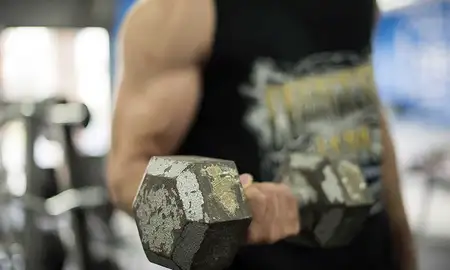
Associate Professor Matthew Barnes.
The research, which has recently been published in the science journal PLOS One, established a method to give more accurate human-based results by using forces that were consistent with what humans were likely to experience in sport.
Lead researcher Associate Professor Matthew Barnes from the School of Sport, Exercise and Nutrition, said the study was an important step forward to developing better scientific practice and for getting more useful human-based results.
“Our previous understanding of the symptoms, mechanisms and healing processes of contusion injury primarily come from animal models and, to a lesser extent, clinical studies in humans,” Dr Barnes explains.
“Often done retrospectively, clinical studies, where an individual presents to a medical facility after injury, are inherently problematic as the timing of injury, forces involved and influence of other behaviours before, during and after injury are unable to be controlled or fully accounted for. As such, the unique nature of each injury makes it difficult to develop an accurate understanding of the physiological responses to contusion injury and the efficacy of recovery practices.”
In the past, contusions injuries have been researched through drop load models which used a metallic mass dropped down a guide tube onto the hind limb of an anaesthetised rat or mouse. The loads used with animals were much higher relative to body weight than what a human is likely to experience, which means that extrapolating the results to humans does not give an accurate representation of the impact.
The new model of testing involved human participants having a weight (ranging from 4.2kg to 7.2kg) dropped from a set height of 67cm down a tube on to their vastus lateralis muscle (lateral side of the thigh). Thirty-two healthy males who had all previously experienced sport-related contusion injury without complication volunteered to participate in the study.
A variety of factors were measured before and after the weight was dropped to determine the impact, with a MRI being conducted 24 hours after impact.
The results showed that despite a decrease in muscle function following the impact, it appears that damage to the actual muscle is minimal and that the level of swelling (oedema) influences pain and force loss. This goes some way to supporting the recommendations that minimising swelling should be prioritised after injury.
“Hopefully the development of this new model of testing will cause others to question the use and validity of animal models to investigate contusion injuries in humans,” Dr Barnes says.
“Additionally, in the future, the model may allow us to identify more effective methods of treatment and provide opportunities to better understand the responses to injury and the mechanisms of adaptation and recovery.”
This study was approved by the Massey University Human Ethics Committee and was conducted in accordance with the standards set out by the Declaration of Helsinki. All participants were informed of the aim of the study, the procedures involved and potential risks and benefits before providing written informed consent.
Related news
New professors and associate professors announced
Twelve Massey staff have been promoted to professor and 24 to associate professor.

New study shows taurine supplements may improve performance recovery
New research suggests taurine supplementation taken after exercise, may help improve the rate of muscle recovery.
